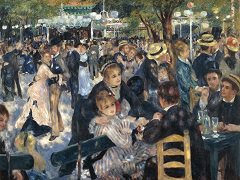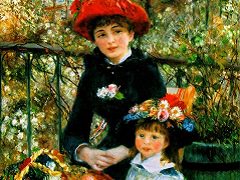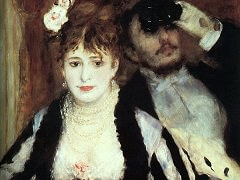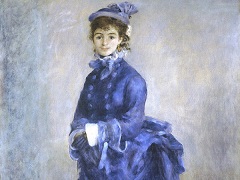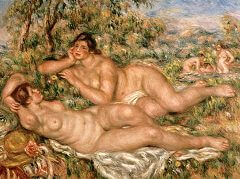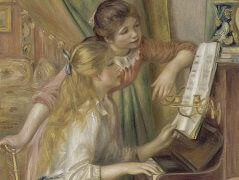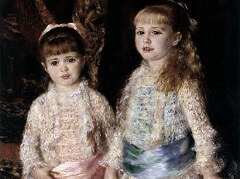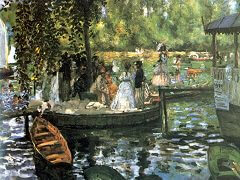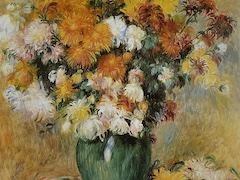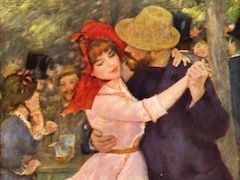A Girl with a Watering Can - by Pierre-Auguste Renoir
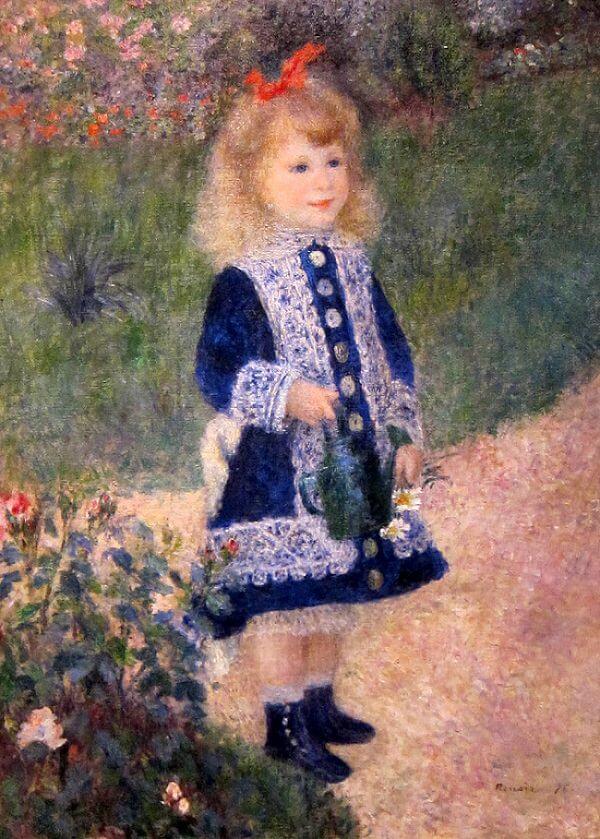
It seems that Renoir painted A girl with a watering can with exactly this hope, that it would please a large audience. The first impressionist exhibition, in 1874, had brought Renoir and his fellow artists more notoriety than business, and the auction he optimistically organized for his own work the following year was a financial disaster. Unlike Cassatt, who had family wealth, Renoir, the son of a tailor, was in a constant struggle for money in his early career. He began to paint charming, light-filled scenes with women and children, like this one, in the hopes of increasing sales. He probably thought that the pretty child in her fancy dress might also attract portrait commissions. Although it was landscape that had provided the first, and most important, inspiration for Impressionism, Renoir's instinct always led him back to the figure.
The deep blue of the dress, the bright red of the bow and the girl's lips, and the cool greens of the lush garden behind her are all given a prismatic brilliance by Renoir's brushwork. Rather than blend his colors, Renoir has applied them in individual touches that dissolve edges and seem to shimmer with light. Impressionism sought to capture the effect of light on the senses, communicating a visual signal with each stroke of the brush.


